
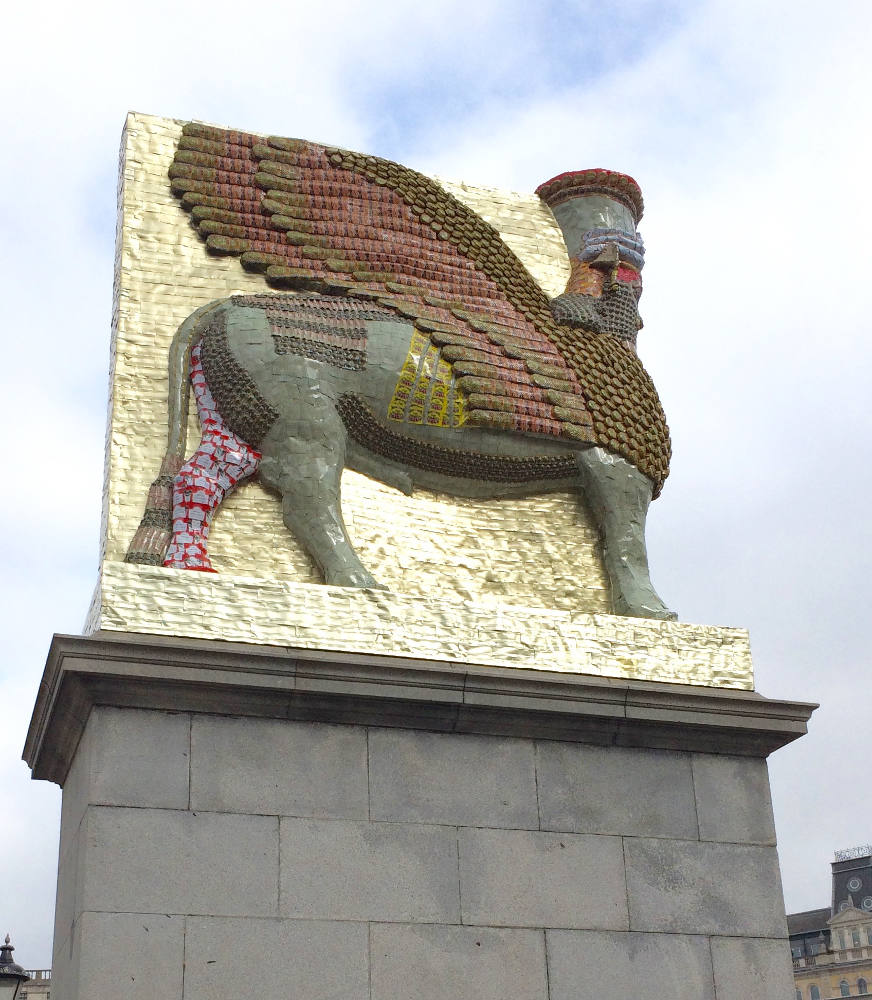
The Invisible Enemy Should Not Exist. Michael Rakowitz (b. 1973). Trafalgar Square, London. Unveiled 28 March 2018. Click on images to enlarge them.
According to the explanatory label at the base of the plinth on which the sculpture sits, Rakowitz began his project in 2006 "to recreate over 6,000 artefacts looted from the Iraq Museum during the war or destroyed elsewere. One of these was Lamassu, a winged deity. It guarded the entrance ti the ancient Assyrian city of Nineveh, near modern-day Mosul, Iraq, in c.700 B.C. until 2015 when it was destroyed” by ISIS.” The explanatory label further explains that it is constructed of “empty date syrup cans, representative of a once-renowned industry’ destroyed” by the wars, but the left foreleg appears to made of Budweiser beer cans. “Rebuilding Lamassu means it can symbolically continue as guardian of a city's past, present and future. The inscription on the Lamassu reads:
Sennacherib, king of the world, king of Assyria, had the inner and outer wall of Nineveh built anew and raised as high as mountains.
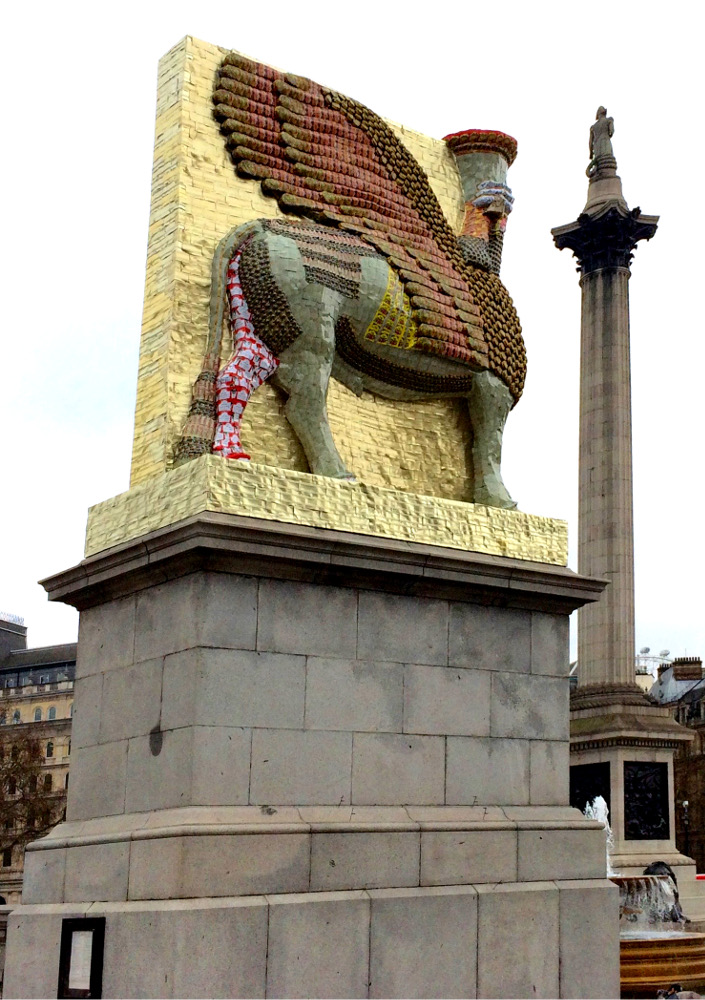
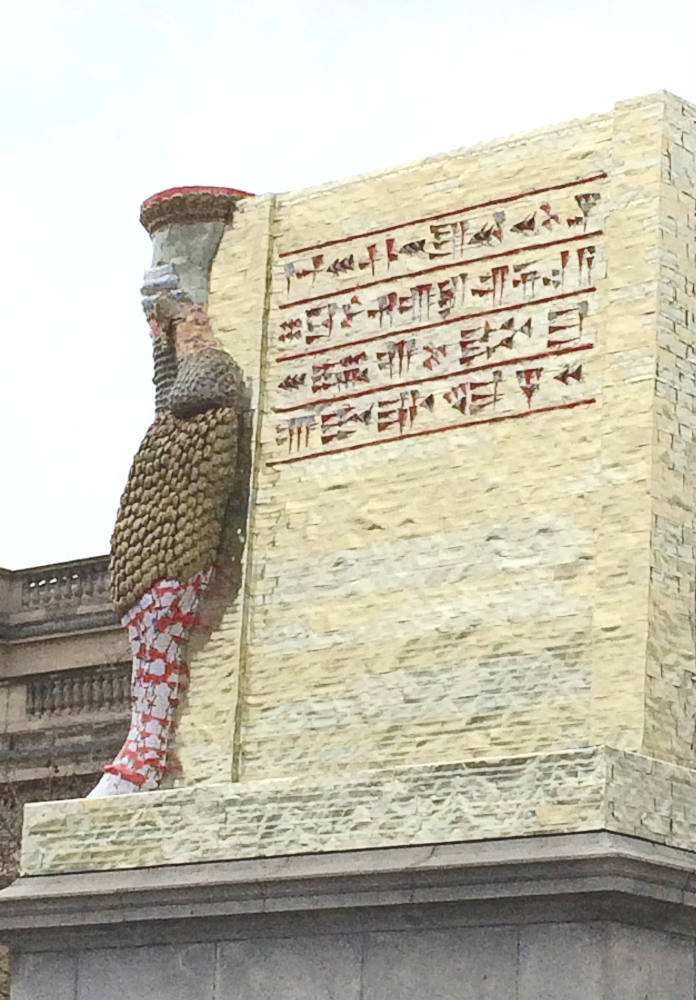
Rakowitz’s attempt to “recreate” a destroyed guardian bullgod from Nineveh brings to mind the Assyrian bullgod in the British Museum whose arrival the Illustrated London News for 8 February 1852 publicized and celebrated. It also reminds me of “The Burden of Nineveh,” Dante Gabriel Rossetti’s meditation on this “wingèd beast from Nineveh”. The 1852 newspaper celebrated the imperial acquisition of a major work from the ancient Near East, Rossetti uses the fact that it far outlasted the civilization that produced it, and Rakowitz, among other things, shows what happens when a European power does not appropriate and protect such objects at the same time he, like Rossetti, uses the statue from Nineveh to mock his own time: Rossetti because he can envisage London becoming a site of deserted archeological excavations like Nineveh, Rakowitz because his use of tin cans as material to construct his similacrum of the original monument suggests for what a short time such a modern work is likely to last.
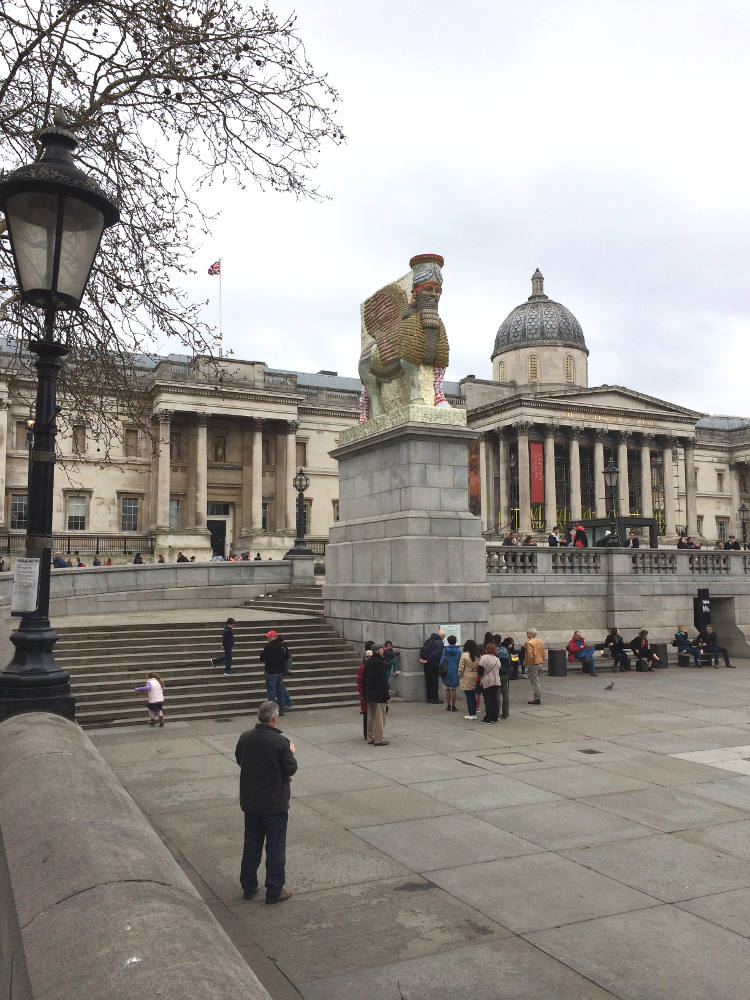
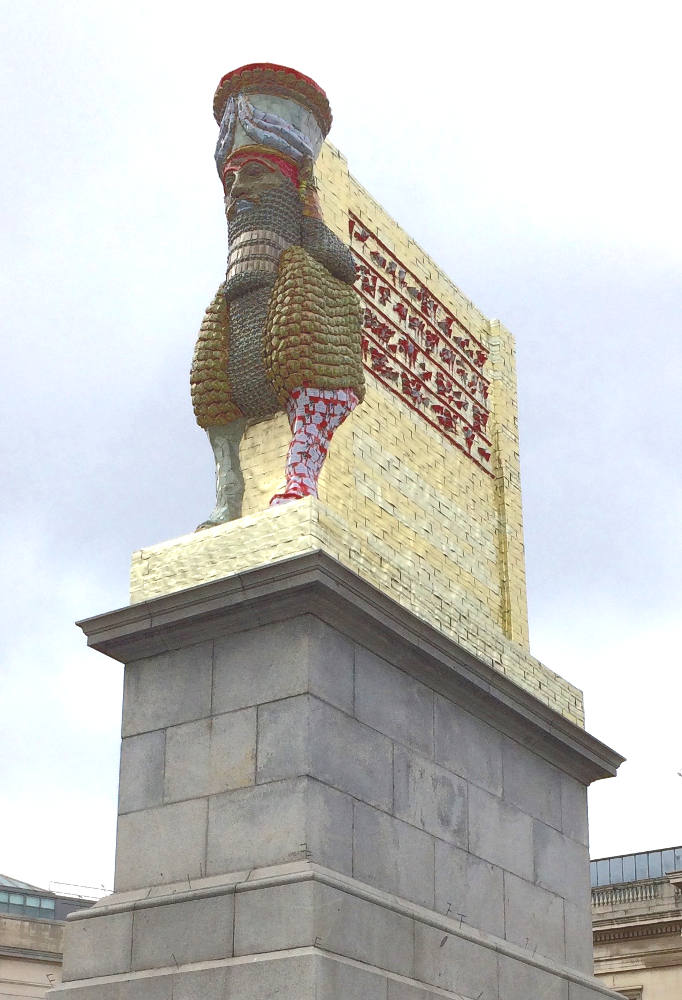
Left: Rakowitz’s sculpture seen against London’s National Gallery, which the artist might have wished to stand in for the many institutions and collectors who purchased artefacts looted from Iraq; or perhaps the National Gallery stands for an institution with clean hands. Right: Another view of The Invisible Enemy Should Not Exist showing the cuniform text.
Photographs by the author, which may be used without prior written permission as long as you link to this document from a web document or credit the Victorian Web in a print one.
Related Materials
- Introduction: Ruskin, Biblical Interpretation, Religious Tacts, and "The Burden of Nineveh"
- "Reception of Nineveh Sculptures at the British Museum." The Illustrated London News (1852)
- Art outlasting Empire in "The Burden of Nineveh"
- Time and its Relics: Dante Rossetti's "The Burden of Nineveh"
Last modified 11 April 2018